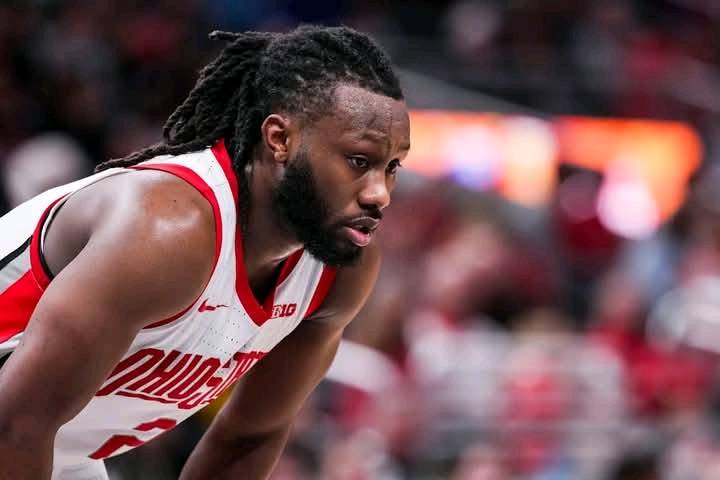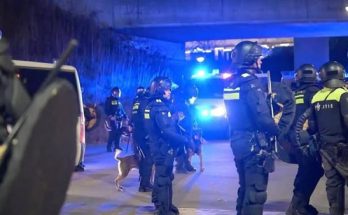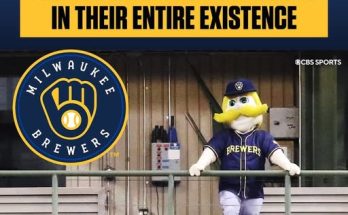COLUMBUS, Ohio – The spring and summer months for Ohio State men’s basketball have been anything but quiet. Far from the roaring crowds of the Schottenstein Center, Head Coach Jake Diebler and his staff have been meticulously executing a strategic offseason blueprint, one designed not just for immediate improvement, but for the elusive goal of sustained program success. This year, the focus has been less on quick fixes and more on laying a deep, enduring foundation through shrewd roster management, impactful additions from the transfer portal, and a renewed emphasis on comprehensive player development. The overarching aim is to cultivate a culture of winning, where consistency, player growth, and a unified vision define the Buckeyes’ future on the hardwood.
The challenge facing Diebler in his first full offseason at the helm was significant. After a season that saw glimmers of promise alongside stretches of inconsistency, the objective was clear: build a roster capable of competing at the top of the Big Ten and making deep runs in the NCAA Tournament. This ambition in the modern era of college basketball is complicated by the ever-present dynamics of the transfer portal and Name, Image, and Likeness (NIL) landscape. However, Diebler’s approach has been calculated, prioritizing long-term stability over short-term gratification, and focusing on a holistic development model that extends beyond mere on-court performance.
At the core of Ohio State’s offseason strategy lies a dual emphasis on roster retention and player development. In an age where the transfer portal makes continuity a luxury, securing the return of key contributors is paramount. The Buckeyes successfully retained pivotal players like senior point guard Bruce Thornton, junior forward Devin Royal, and sophomore guard John Mobley Jr. Thornton, as a returning captain and floor general, provides invaluable leadership and experience. Royal’s continued growth, transitioning to small forward, offers versatility, while Mobley Jr. represents a crucial piece of the backcourt’s future. Diebler has been vocal about the importance of these core pieces, recognizing that internal growth is often the most sustainable path to improvement.
“Retention and development – those two things have to exist for us,” Diebler stated, underscoring the philosophy. This commitment extends beyond the starters to developmental players like Taison Chatman, Colin White, and Ivan Njegovan. Investing in these athletes, providing them with the resources and coaching to hone their skills, is a testament to the long-view approach. It builds loyalty and fosters a sense of ownership within the program, essential ingredients for sustained success. The coaching staff understands that while external talent can provide an immediate boost, the cultivation of existing talent is what truly builds a strong program culture.
Player development, under Diebler’s guidance, is not just about physical drills or shooting reps. It’s a comprehensive process that includes enhancing basketball IQ, improving on-court chemistry, and fostering leadership qualities. This offseason has seen increased 5-on-5 play in practice, allowing players to build synergy and understand each other’s tendencies in live situations. The goal is to create a cohesive unit that plays smarter, not just harder, and where every player understands their role within the team’s collective success. This meticulous attention to detail in development lays the groundwork for a more adaptable and resilient team on the court.
While internal development is foundational, the modern college basketball landscape necessitates strategic engagement with the transfer portal. Ohio State’s approach has been surgical, identifying specific needs and targeting players who not only possess the requisite skill sets but also embody the team’s “Winning Over Everything” mantra. The aim is not to simply accumulate talent, but to acquire pieces that complement the existing roster, fill critical gaps, and bring valuable experience to the Big Ten crucible.
This offseason saw the Buckeyes make significant additions to their frontcourt, a clear area of emphasis. The arrival of seven-foot center Christoph Tilly from Santa Clara provides a much-needed low-post scoring threat and Big Ten-level size. Alongside him, 6-foot-8 power forward Brandon Noel from Wright State brings physicality and rebounding prowess. These transfers are expected to make an immediate impact, addressing rebounding issues and enhancing the team’s interior presence, which were critical weaknesses in the previous season.
In the backcourt, the addition of point guard Gabe Cupps from Indiana adds dependable depth and a proven Big Ten competitor. While Josh Ojianwuna from Baylor is also a significant addition to the frontcourt, his recovery from a severe knee injury highlights the challenges and risks inherent in the transfer market, necessitating a robust and flexible strategy.
Diebler has emphasized the importance of experience in his portal acquisitions this year. “We’re certainly going to be aggressive in the portal to complement the pieces we have, and sometimes a complement needs to be a high, high impact player,” he stated. This philosophy suggests a calculated approach, balancing immediate impact with long-term fit and character, ensuring that new players seamlessly integrate into the established culture. The success in the portal is also increasingly tied to NIL opportunities, and Ohio State, under athletic director Ross Bjork, aims to be at the “cutting edge” in this evolving landscape, providing a stable financial environment that allows players to focus on team aspects.
Beyond the immediate impact of current players and transfers, sustained success is heavily reliant on a strong recruiting pipeline of high-level high school talent. Ohio State’s 2025 recruiting class reflects this commitment. Four-star power forward A’mare Bynum is expected to contribute as a freshman, bringing a skilled and physical presence to the frontcourt. Guards Myles Herro and Mathieu Grujicic (an international player from Germany) are seen as developmental prospects with high ceilings, poised to grow into significant roles in the coming years.
The recruitment of these athletes speaks to Ohio State’s ability to attract diverse talent – from in-state products to national prospects and international players. It also highlights a strategic vision that looks several years down the line, ensuring a continuous influx of talent to maintain competitiveness. The blend of experienced veterans, impactful transfers, and promising freshmen creates a balanced roster construction, capable of adapting to different opponents and unforeseen challenges throughout a long season.
Underpinning all of these strategic moves is Diebler’s unwavering commitment to building a winning culture. The team’s new mantra, “Winning Over Everything,” is more than just a catchy phrase; it’s a guiding principle that emphasizes collective success, unselfishness, and a relentless pursuit of excellence. This culture is fostered through daily interactions, shared ownership, and a focus on continuous improvement.
Diebler frequently points to moments where veteran players are mentoring younger ones, passing down knowledge not just about basketball, but about life and leadership. The engagement of former Buckeyes like Russell, Scoonie Penn, and Greg Oden in summer practices further reinforces this ethos, connecting the present team to the rich history and tradition of the program. This connection to the past, combined with a clear vision for the future, helps instill a deep appreciation and love for Ohio State, motivating players to represent the program with pride and dedication.
The offseason has also involved a critical self-assessment. Diebler acknowledged the disappointment of missing the NCAA Tournament but emphasized the growth shown by young players. He is pushing for increased pace in their offense and a higher collective basketball IQ. These are not just tactical adjustments but cultural shifts that demand discipline, communication, and a shared commitment to a more dynamic and effective style of play.
As summer transitions to fall, and then to the demands of the regular season, the true test of Ohio State’s offseason blueprint will unfold. The foundation has been laid with strategic roster retention, targeted and impactful transfer portal additions, and a clear philosophy of player development and culture building. The challenge now lies in translating these offseason successes into consistent on-court performance.
Sustained success in college basketball requires more than just talent; it demands resilience, adaptability, and a unified purpose. Diebler’s strategic offseason has prioritized these elements, aiming to create a program that can withstand the inevitable ups and downs of a demanding season and emerge stronger. The buzz around the program is palpable, a testament to the methodical and thoughtful approach taken this summer. For Ohio State men’s basketball, the future looks not just promising, but built on a sturdy framework designed for enduring strength.



